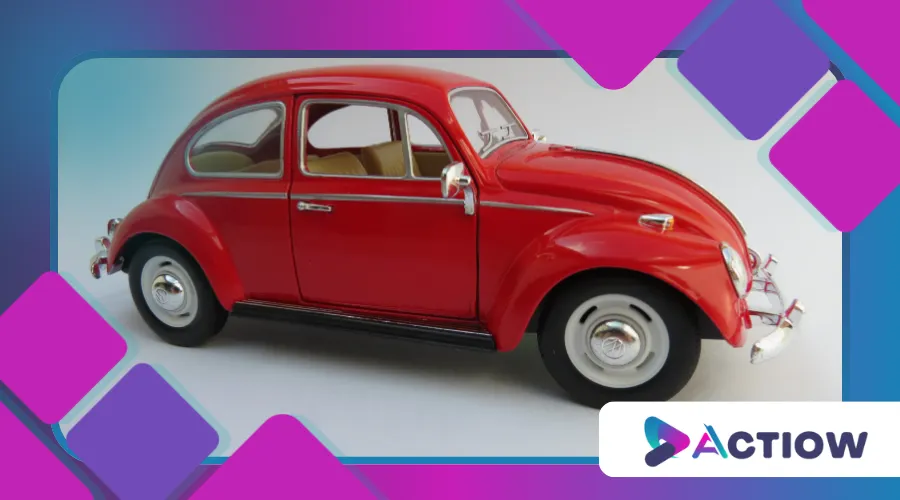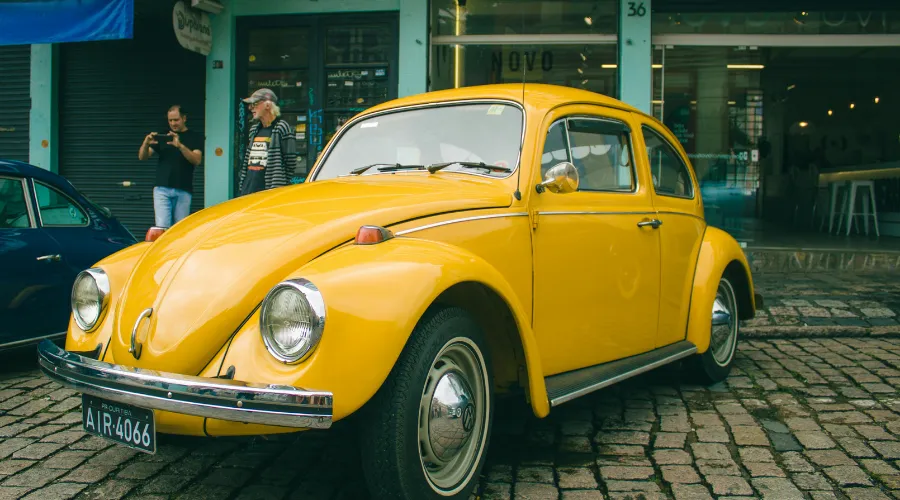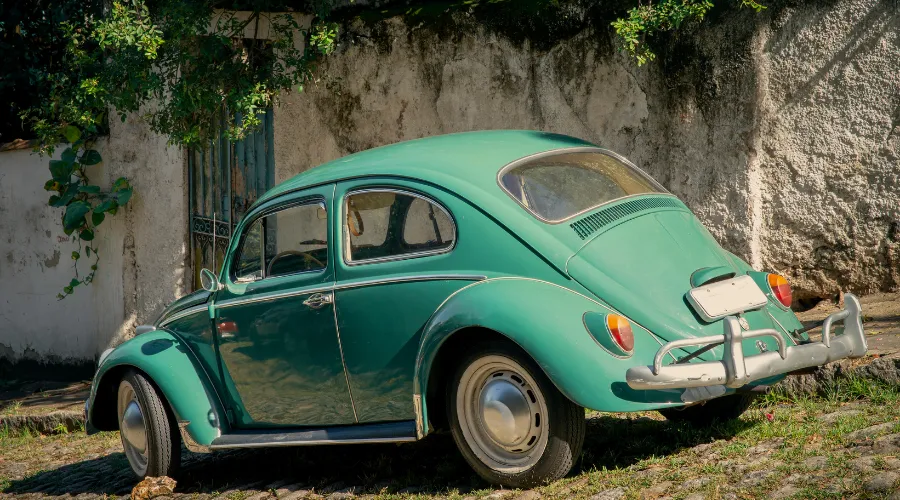The History of the Beetle: How the Car Became a Global Phenomenon

Anúncios
The History of the Beetle is a tale of innovation, resilience, and cultural impact.
Few cars have achieved the iconic status of the Volkswagen Beetle, a vehicle that transcended its utilitarian origins to become a global phenomenon.
From its inception in Nazi Germany to its heyday as a symbol of counterculture in the 1960s, the Beetle’s journey is a testament to how design, marketing, and timing can transform a simple car into a cultural icon.
Anúncios
The Beetle’s unique design and engineering have inspired countless adaptations and tributes, showcasing its lasting influence on automotive design.
Moreover, the car’s cultural significance has made it a favorite among collectors and enthusiasts, ensuring its legacy continues to thrive.
The Birth of an Icon: From Nazi Germany to Post-War Europe
The History of the Beetle begins in the 1930s, under the shadow of Adolf Hitler’s regime.
Ferdinand Porsche, the renowned engineer, was tasked with designing a “people’s car” (or Volkswagen in German) that would be affordable, reliable, and accessible to the average citizen.
The result was the Type 1, later known as the Beetle, with its distinctive rounded shape and rear-mounted air-cooled engine.
However, World War II interrupted mass production, and the factory shifted to manufacturing military vehicles.
It wasn’t until after the war, under British control, that the Beetle’s production resumed.
By 1949, Volkswagen had reclaimed its factory, and the Beetle began its ascent as a symbol of post-war recovery and economic mobility in Europe.
The car quickly became associated with the optimism of the post-war era, representing a new beginning for many families.
As production ramped up, the Beetle’s affordability and reliability made it a popular choice for those looking to rebuild their lives.
+ 10 Rarest Cars in the World: Vehicles Worth Millions
Crossing the Atlantic: The Beetle Conquers America
In the 1950s, the Beetle made its way to the United States, a market dominated by large, flashy cars with tailfins and V8 engines.
At first, the Beetle’s small size and unconventional design made it an oddity.
But Volkswagen’s clever marketing campaigns, such as the famous “Think Small” ad by Doyle Dane Bernbach, turned its quirks into selling points.
The Beetle became synonymous with practicality, affordability, and a rejection of excess.
As the car gained traction, it began to attract a diverse range of drivers, from young families to artists and intellectuals.
By the 1960s, the Beetle had become a cultural icon in America.
It was the car of choice for hippies, surfers, and college students, embodying the spirit of rebellion and individuality.
Its popularity was further boosted by its appearance in movies like The Love Bug, which introduced the world to Herbie, the lovable, sentient Beetle.
The film’s success solidified the Beetle’s status as a symbol of fun and adventure, appealing to audiences of all ages.

A Global Phenomenon: The Beetle’s Worldwide Appeal
The History of the Beetle is not just an American or European story; it’s a global one.
By the 1970s, the Beetle was being produced in countries like Mexico, Brazil, and Australia, making it one of the most widely manufactured cars in history.
Its simple design and ease of repair made it ideal for developing markets, where it became a common sight on roads and in rural areas.
In Mexico, the Beetle (or Vocho, as it’s affectionately called) became a cultural staple, serving as both a family car and a taxi.
Production in Mexico continued until 2003, long after it had ceased in other countries, a testament to its enduring popularity.
The Beetle’s adaptability to various markets helped it maintain relevance, even as automotive technology evolved.
Its presence in different cultures has led to unique modifications and uses, further embedding it in local traditions.
++ Famous Movie Cars: Discover the Vehicles That Made Cinematic History
The Beetle’s Decline and Revival
Despite its success, the Beetle faced challenges in the 1970s.
Stricter emissions standards and the rise of more modern, fuel-efficient competitors led to declining sales in key markets.
Volkswagen responded by introducing the Golf (or Rabbit in the U.S.), which eventually replaced the Beetle as the company’s flagship model.
However, the Beetle’s legacy was far from over.
In 1998, Volkswagen unveiled the New Beetle, a modern reinterpretation of the classic design.
While it lacked the original’s rear-engine layout, the New Beetle captured the spirit of its predecessor and introduced the car to a new generation of drivers.
The New Beetle’s nostalgic design appealed to those who had fond memories of the original, creating a bridge between generations.
This revival also sparked renewed interest in classic Beetles, leading to a thriving market for restorations and customizations.

The Beetle’s Cultural Impact
The History of the Beetle is as much about culture as it is about cars.
It has appeared in countless films, TV shows, and songs, cementing its place in popular culture.
Its design has inspired everything from toys to fashion, and its image is instantly recognizable worldwide.
The Beetle also played a role in shaping automotive design.
Its aerodynamic shape and efficient use of space influenced countless other vehicles, and its success proved that small cars could be both practical and desirable.
Moreover, the Beetle’s quirky personality has made it a favorite among artists and designers, leading to unique artistic interpretations across various mediums.
The car’s enduring appeal has also fostered a community of enthusiasts who celebrate its history through events and gatherings.
The End of an Era
In 2019, Volkswagen announced the end of Beetle production, marking the conclusion of an 81-year run.
The final model, a white convertible, rolled off the assembly line in Puebla, Mexico, with a ceremony that celebrated the car’s legacy.
While the Beetle may no longer be in production, its impact endures.
It remains a symbol of innovation, resilience, and cultural significance, a car that truly became a global phenomenon.
The end of production has prompted many to reflect on the Beetle’s journey and its place in automotive history, ensuring that its story will be told for generations to come.
For further exploration of the Beetle’s impact on culture and design, visit Volkswagen’s Official History.
Tables:
Table 1: Key Milestones in the History of the Beetle
| Year | Milestone |
|---|---|
| 1938 | Prototype of the Beetle unveiled |
| 1949 | Mass production resumes post-WWII |
| 1959 | “Think Small” ad campaign launches in the U.S. |
| 1972 | Beetle surpasses Ford Model T as the best-selling car in history |
| 1998 | New Beetle introduced |
| 2019 | Final Beetle produced |
Table 2: Beetle Production by Country
| Country | Years of Production | Total Units Produced |
|---|---|---|
| Germany | 1938-1978 | 16.5 million |
| Mexico | 1954-2003 | 1.7 million |
| Brazil | 1959-1996 | 3.3 million |
| Australia | 1954-1976 | 0.5 million |
Conclusion: The Beetle’s Lasting Legacy
The History of the Beetle is a story of how a car became more than just a mode of transportation.
It became a symbol of resilience, adaptability, and cultural change.
From its humble beginnings in Nazi Germany to its status as a global icon, the Beetle’s journey is a testament to the power of design, marketing, and timing.
As we look back on the Beetle’s legacy, it’s clear that its impact extends far beyond the automotive world.
It’s a reminder that even the simplest ideas can achieve greatness, and that innovation and creativity can transform the ordinary into the extraordinary.
The Beetle may no longer be on the road, but its spirit lives on, inspiring future generations of designers, engineers, and dreamers.
